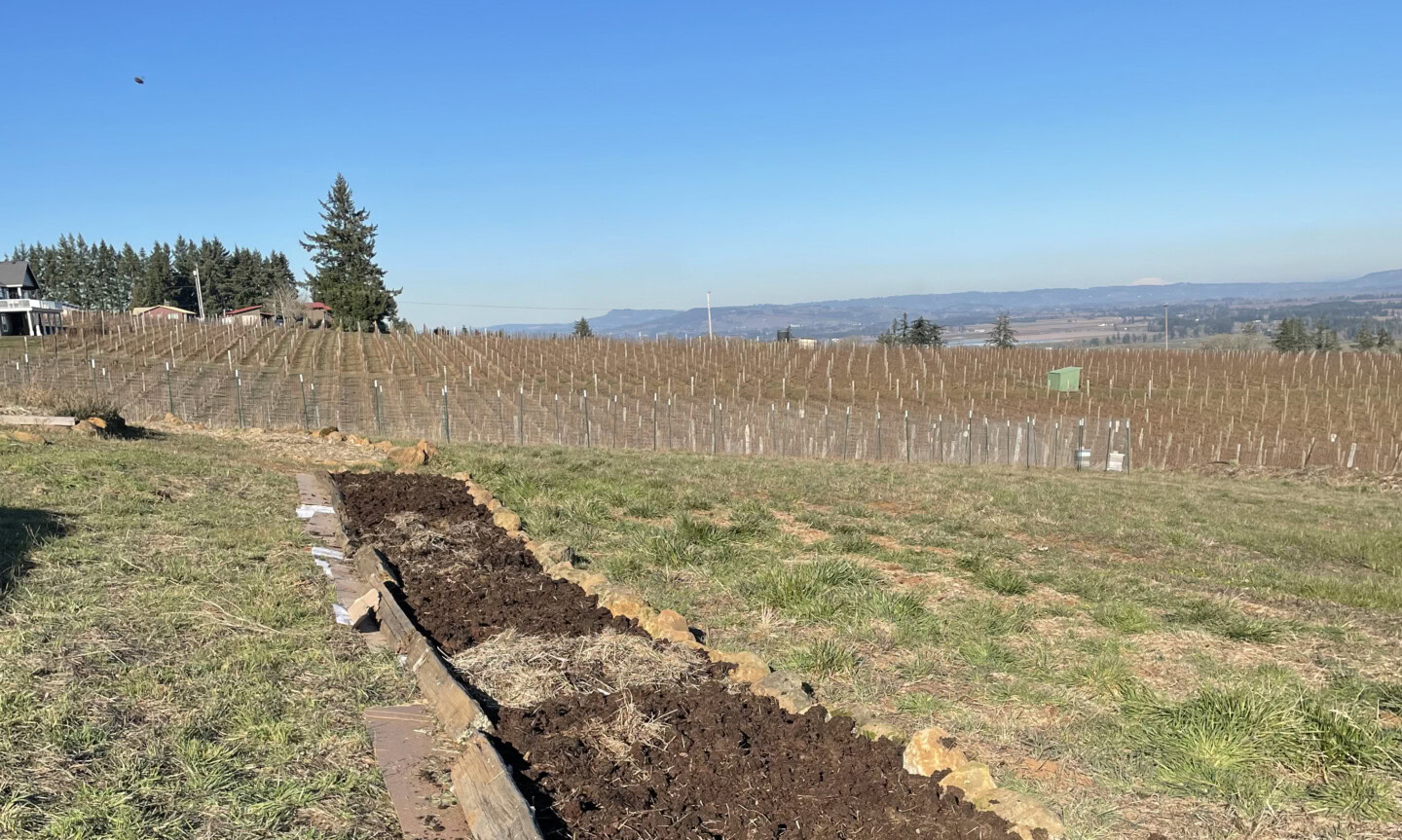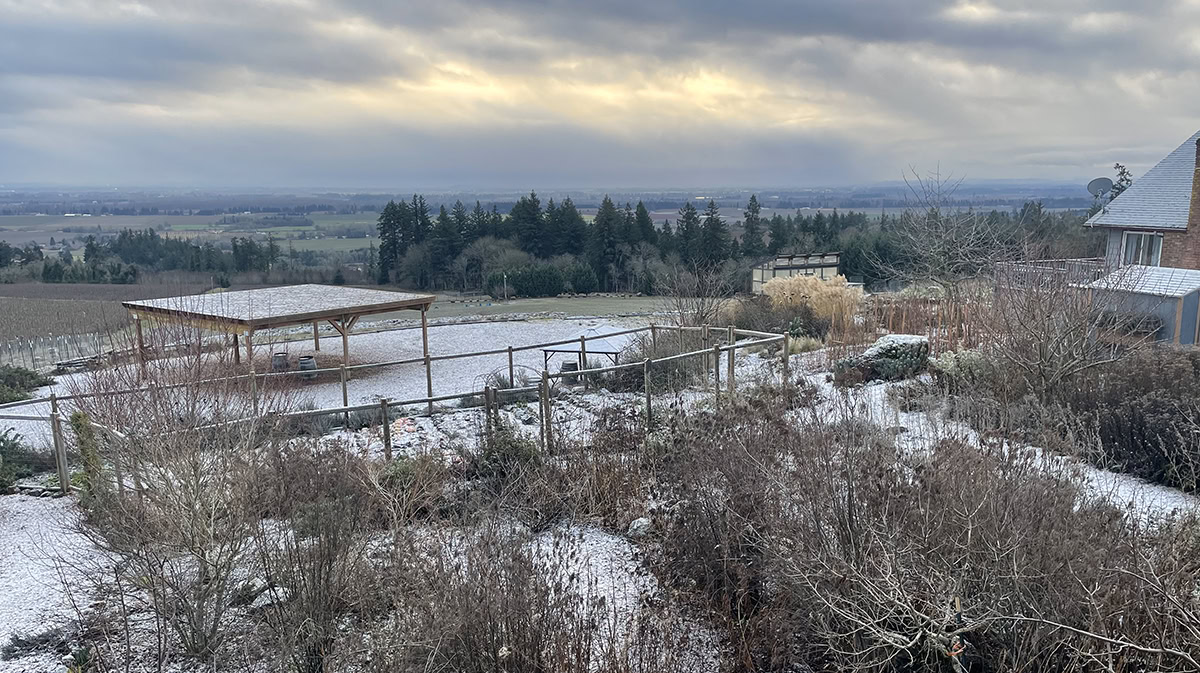“Trillons of leaves, tender and green, live, die and fall each year. So fragile, so temporary. So essential to every towering tree that bathes in the starlight of centuries. It is an old truth of nature that softness often holds the key to enduring strength.” -Jarod K. Anderson, Something in the Woods Loves You
There are those rare moments in the winter when a break comes from the relentless rain that graces the Willamette Valley. Days when pure blue skies open up against the bare branches of winter trees. On those days, the garden reverberates with the muted scratches of sparrows and towhees sorting through insects that shelter beneath fallen leaves. When I look out into this winter landscape, I find myself in awe, struck at the beauty of my natural surroundings. In these moments of winter solace, I easily fall prey to the distinct othering of myself from nature. It is easy to admire nature for all the beauty it provides us, neglecting the fact that we are nature and equally worthy of admiration.
Feeling part of the ecosystem comes easily when I’m moving in my garden, trowel, and pruners in hand, a living part of the world. This is the art of gardening that holds us captive each day, willing to endure numb fingers and chapped skin for the opportunity to be part of something. Tending a patch of soil brings us out of ourselves, reminding us of the greater system that we are part of, not the center of. As I bustle about the garden pruning roses and fruit trees, I feel wrapped into the fold of the ecosystem. The arm of the apple tree feels no different than my own, which lovingly shapes its frame. I have the tree’s best interest at heart, pruning for their well-being, and in summer, when abundant with fruit and flowers, I can’t help but think they are lovingly thinking of me, wishing me nourishment.

As flowery and poetic as that notion is, we all know that the tree is not really wanting to feed us specifically. Their only wish is that we propagate the seeds contained in those fruits, to allow the continuation of the next generation of trees. Both of these ideas can exist through the mutual care of trees and humans. It is paradoxical to think of trees as caring for us by caring about the well being of their young. However, the contradictory nature of this is
often due to a mismatch in the cultural norms of our human society. The world of trees and the worlds of humans don’t often align. Rather than attempt to untangle the inconsistency of such an idea, I am choosing to sit content with the contradictory nature of it. What would our world look like if we all let ourselves live in the world of trees for a while?
It is in this state that I realized that with a future of increasing climatic instability, we need to be willing to have flexibility in our worldviews. Indigenous world views continue to teach about the importance of braiding together ideas. Diversity in ideas allows for greater resilience and adaptivity, in this way we can fold together scientific and indigenous world views, allowing both to grow into one another. Braids are stronger than a single tendril of an idea. They offer the support of many instead of the frail frame of the few. In this way, we can live with the idea that in caring for our gardens, they will care for us. This coexists with our scientific understanding that plants seek the continual flourishing of their own generation, to procreate by seed or stem, to grow in another day of light. Most of us can relate to both of these ideas. We can fold ourselves seamlessly into both realities. I, too, wish to take in every day of light, to be mindful of each day, and to take advantage of it. Maybe this looks like the offering of a flower or a fruit, or maybe it takes on the shape of a gardener pruning her plants for the mutual flourishing of both.
– With Love from the Garden
Shannon
Farm to Table
Our tasting room menu this month features leeks, bay, thyme, and beets from the Brooks Garden.
